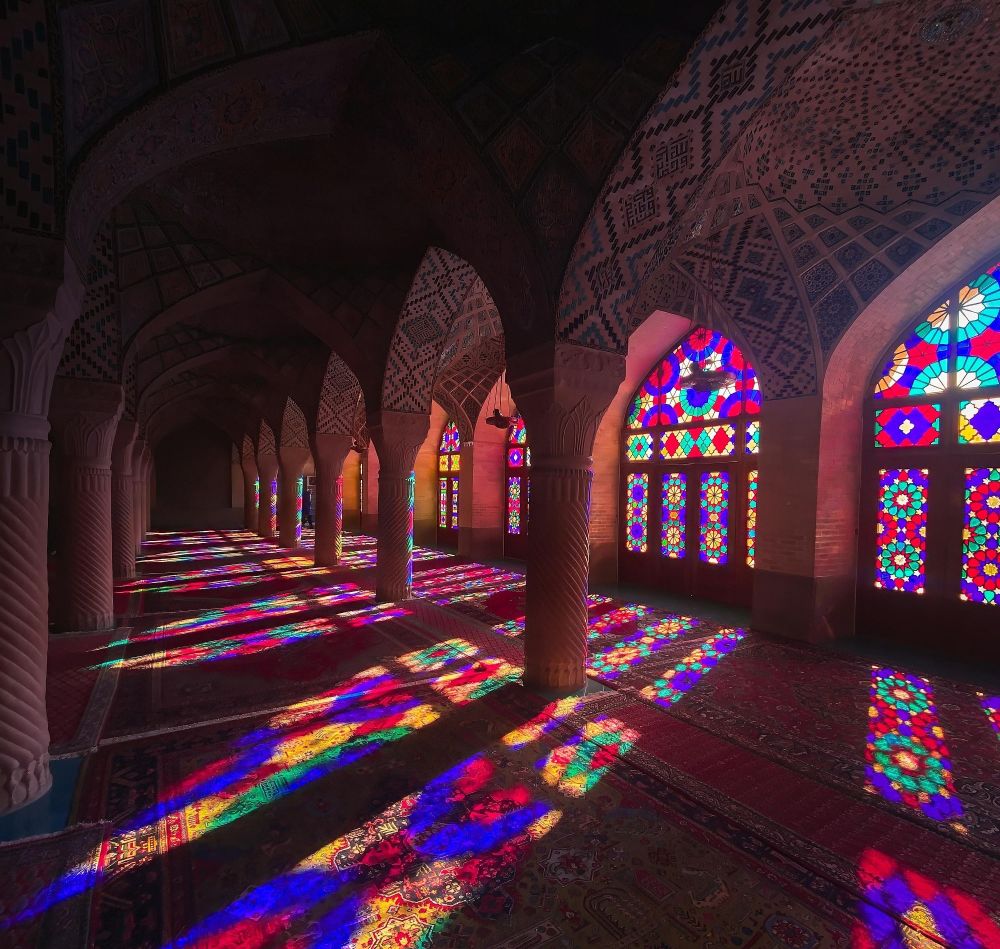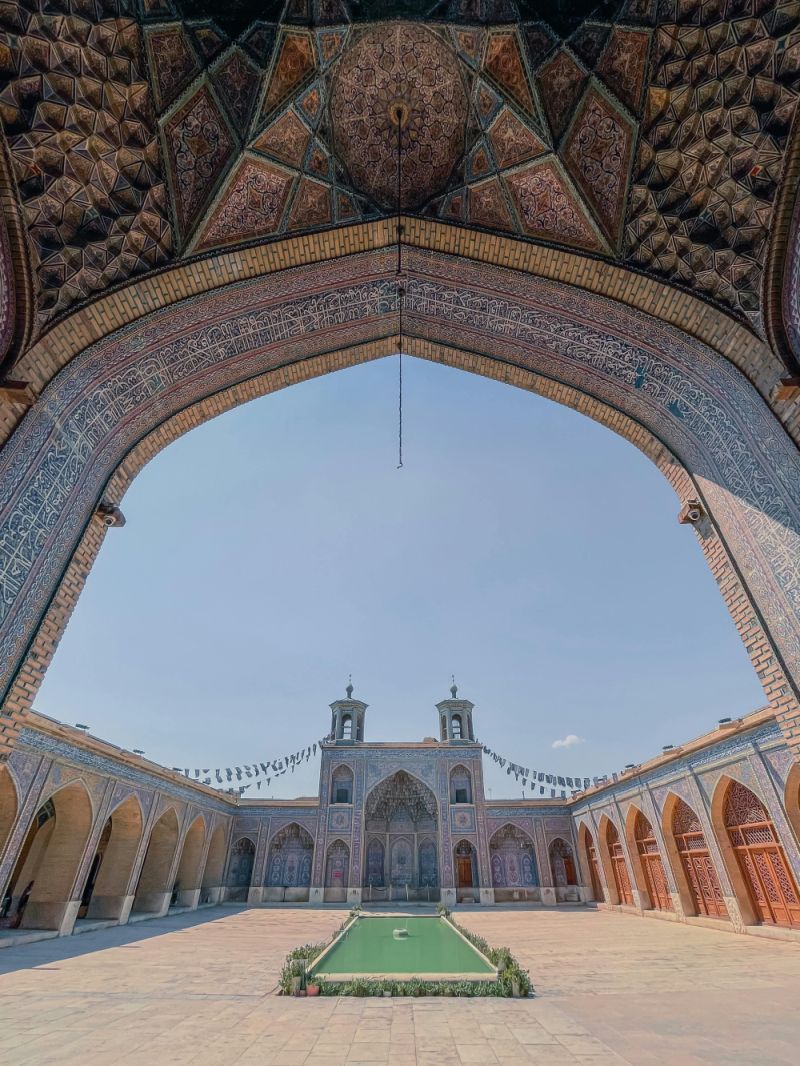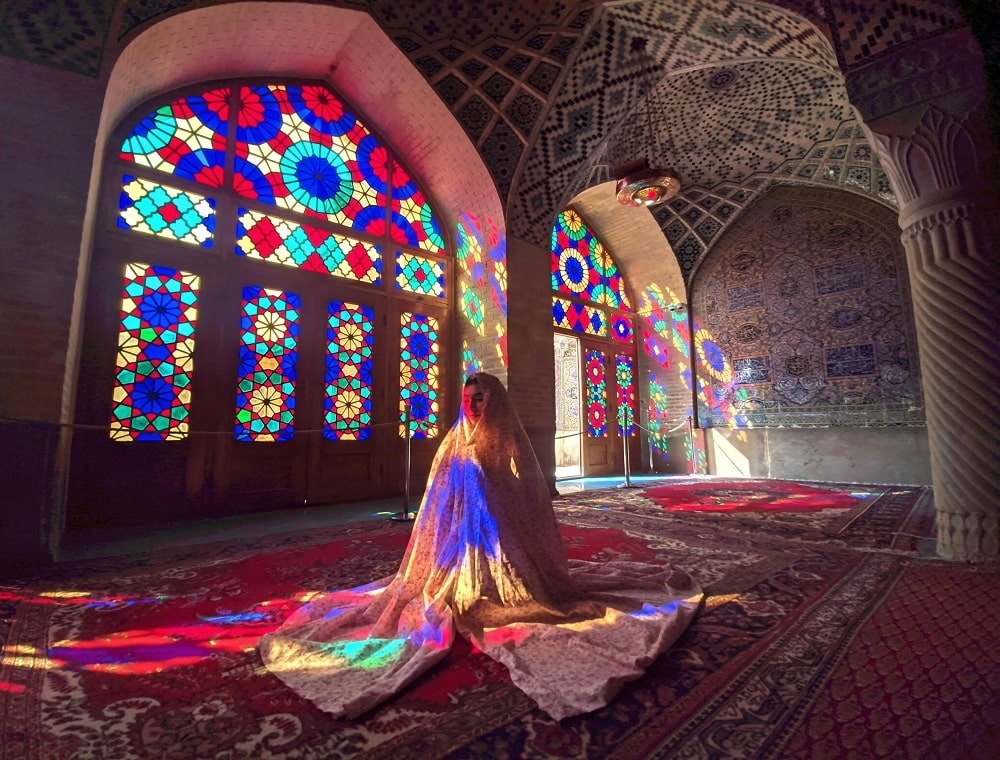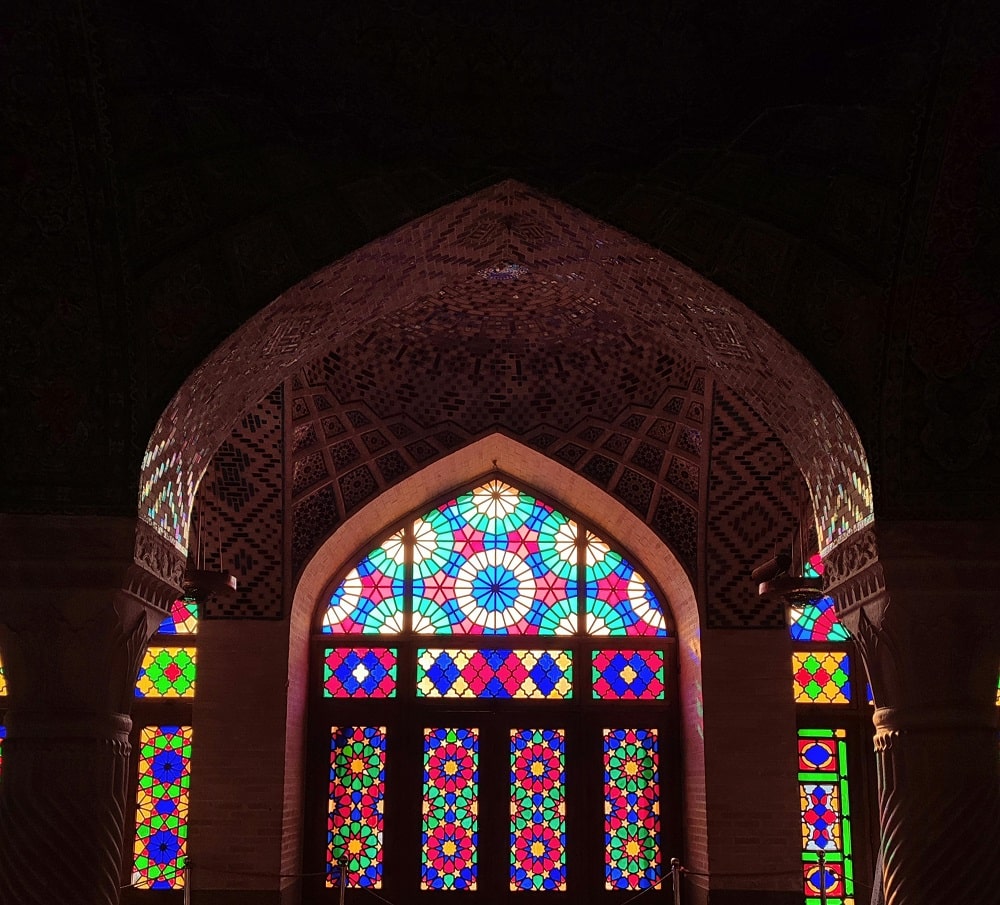The History of Nasir al-Mulk Mosque: A Jewel of Shiraz
Nestled in the heart of Shiraz, Iran, the Nasir al-Mulk Mosque stands as a testament to the ingenuity, artistry, and spiritual devotion of its creators. Known affectionately as the "Pink Mosque" for its distinctive use of rose-colored tiles, this architectural marvel has captivated visitors for over a century. Its kaleidoscopic stained glass windows, intricate tilework, and serene courtyards weave a story that stretches back to the Qajar dynasty, a period of Persian history marked by both opulence and transformation. In this blog, we’ll dive deep into the history of the Nasir al-Mulk Mosque—its origins, construction, cultural significance, and enduring legacy.
The Qajar Era: A Time of Transition
To understand the Nasir al-Mulk Mosque, we first need to set the stage with the Qajar dynasty, which ruled Iran from 1789 to 1925. This was a time of significant change for Persia (modern-day Iran). The Qajars came to power after a period of instability following the fall of the Zand dynasty, and their rule was characterized by a blend of traditional Persian culture and increasing exposure to Western influences. Art and architecture flourished under their patronage, often reflecting a fusion of old Persian styles with new ideas brought by trade and diplomacy.
Shiraz, a city already renowned for its poets, gardens, and rich history, became a cultural hub during this era. It was here, amid the bustling streets and fragrant orange groves, that the Nasir al-Mulk Mosque was conceived. The mosque’s construction began in 1876, a project spearheaded by Mirza Hasan Ali Nasir al-Mulk, a prominent Qajar nobleman and governor of Shiraz. His vision was ambitious: to create a place of worship that would not only serve the faithful but also stand as a lasting monument to the artistry of his time.
The Visionary Behind the Mosque
Mirza Hasan Ali Nasir al-Mulk was no ordinary figure. Born into an influential family, he was a wealthy landowner and a key political player in the Qajar administration. His title, "Nasir al-Mulk" (meaning "Helper of the Sovereign"), reflects his close ties to the ruling elite. But beyond politics, he was a patron of the arts, deeply invested in leaving a legacy that would outlast his lifetime. The mosque bearing his name wasn’t just a religious endeavor—it was a personal statement, a gift to his city, and a reflection of his refined taste.
The Qajar period saw many elites commissioning grand projects to cement their status, and Mirza Hasan Ali was no exception. However, what sets the Nasir al-Mulk Mosque apart is its unique design, which deviates from the more common blue-dominated aesthetics of Persian architecture. Instead, it embraces a softer, more vibrant palette—most notably the pink tiles that give it its nickname. This choice wasn’t arbitrary; it was a deliberate nod to the evolving artistic sensibilities of the time, blending tradition with innovation.

The Architects and the Building Process
Construction of the mosque began in 1876 and took twelve years to complete, finally opening its doors in 1888. The project was led by two master architects: Mohammad Hasan-e-Memār and Mohammad Reza Kāshi-Sāz-e-Shirāzi. Both were celebrated figures in Shiraz, known for their expertise in Persian architecture. Mohammad Hasan-e-Memār was the chief designer, overseeing the structural and aesthetic elements, while Mohammad Reza Kāshi-Sāz-e-Shirāzi specialized in the intricate tilework that would become the mosque’s hallmark.
Building the mosque was no small feat. The site, located near the Shah Cheragh Shrine in Shiraz’s historic district, required careful planning to integrate with the surrounding urban fabric. Workers sourced materials locally where possible—stone from nearby quarries, wood for the beams, and clay for the tiles. The stained glass, a standout feature, was likely imported or crafted by specialized artisans, as this technique was less common in traditional Persian architecture but had begun to gain popularity through trade with Europe and the Ottoman Empire.
The mosque’s layout follows classic Persian design: a rectangular courtyard flanked by prayer halls, with a central pool reflecting the sky. The western prayer hall, however, is where the magic happens. Here, rows of stained glass windows line the walls, designed to catch the morning sun and transform the interior into a living canvas of color. The architects also incorporated the "Panj Kāse" (five concaved) style in the arches, a traditional feature that adds elegance and symmetry to the structure.
A Symphony of Color and Light
What makes the Nasir al-Mulk Mosque truly unforgettable is its interplay of light and color. The stained glass windows—featuring geometric patterns and floral motifs in reds, blues, yellows, and greens—were a bold departure from the monochromatic domes and minarets of earlier Persian mosques. When sunlight streams through them, particularly in the early morning, it dances across the tiled floors and walls, creating an ethereal glow that feels almost otherworldly.
The pink tiles, meanwhile, dominate the exterior and parts of the interior, giving the mosque a warm, inviting hue. These tiles are adorned with arabesque patterns and verses from the Quran, hand-painted by skilled artisans. The combination of pink with other colors—turquoise, gold, and white—creates a harmonious balance that’s both striking and soothing. For the Qajar elite, this aesthetic was a statement of sophistication, reflecting their exposure to global trends while staying rooted in Persian identity.
Spiritual and Cultural Significance
Though its beauty draws tourists today, the Nasir al-Mulk Mosque was built first and foremost as a place of worship. Its prayer halls, particularly the western one with its stained glass, provided a serene space for Shiraz’s Muslim community to gather. The courtyard, with its reflecting pool and shaded porticos, offered a place for reflection and communal activities. In a city known for its intellectual and artistic heritage, the mosque became a symbol of Shiraz’s enduring spirit.
Beyond its religious role, the mosque also served a social function. During the Qajar era, mosques often doubled as community centers where people exchanged news, settled disputes, or sought education. The Nasir al-Mulk Mosque, with its grandeur and accessibility, likely played a similar role, reinforcing Mirza Hasan Ali’s influence in the region.

Challenges and Preservation
The mosque’s history hasn’t been without challenges. By the early 20th century, the Qajar dynasty was crumbling, replaced by the Pahlavi dynasty in 1925. Political upheaval and modernization efforts shifted focus away from historical preservation, and many Qajar-era structures fell into neglect. The Nasir al-Mulk Mosque, however, was fortunate. Its maintenance was entrusted to the Nasir al-Mulk Endowment Foundation, established by the nobleman’s descendants to ensure its upkeep.
Over the decades, the mosque weathered earthquakes, urban expansion, and changing tastes. Restoration efforts in the 20th and 21st centuries repaired damaged tiles, reinforced the structure, and preserved the stained glass. Today, it remains in excellent condition, a testament to both its original craftsmanship and the dedication of those who’ve cared for it.
The Pink Mosque Today
In the 21st century, the Nasir al-Mulk Mosque has taken on a new life as a global icon. Tourists flock to Shiraz to experience its beauty, especially during the early morning hours when the light show is at its peak. Photographers, in particular, have made it famous, with countless images of its colorful interior circulating online. For many, it’s a bucket-list destination, a place where history, art, and spirituality converge.
Locally, it remains a functioning mosque, though its tourist appeal sometimes overshadows its religious role. The courtyard still echoes with the call to prayer, and the community continues to cherish it as part of Shiraz’s heritage. The Nasir al-Mulk Endowment Foundation oversees its operations, balancing preservation with public access—a delicate task in an age of mass tourism.
A Legacy in Light
The history of the Nasir al-Mulk Mosque is more than a tale of bricks and tiles; it’s a story of ambition, creativity, and resilience. From its inception in 1876 to its completion in 1888, it embodied the Qajar era’s blend of tradition and innovation. Mirza Hasan Ali Nasir al-Mulk, its patron, left behind a masterpiece that transcends time, inviting each visitor to step into a world where light and color tell a story of their own.
Today, as you stand in the western prayer hall, watching the sun paint the floor with a rainbow of hues, you can’t help but feel connected to the past. The Nasir al-Mulk Mosque isn’t just a building—it’s a living legacy, a reminder of Shiraz’s golden age, and a gift to all who seek beauty in the world. Whether you’re a history buff, an architecture enthusiast, or simply a traveler with a curious heart, this Pink Mosque has something to offer. So, if you ever find yourself in Iran, make the journey to Shiraz. Step inside, and let the light guide you through a piece of history that’s as vibrant as ever.






